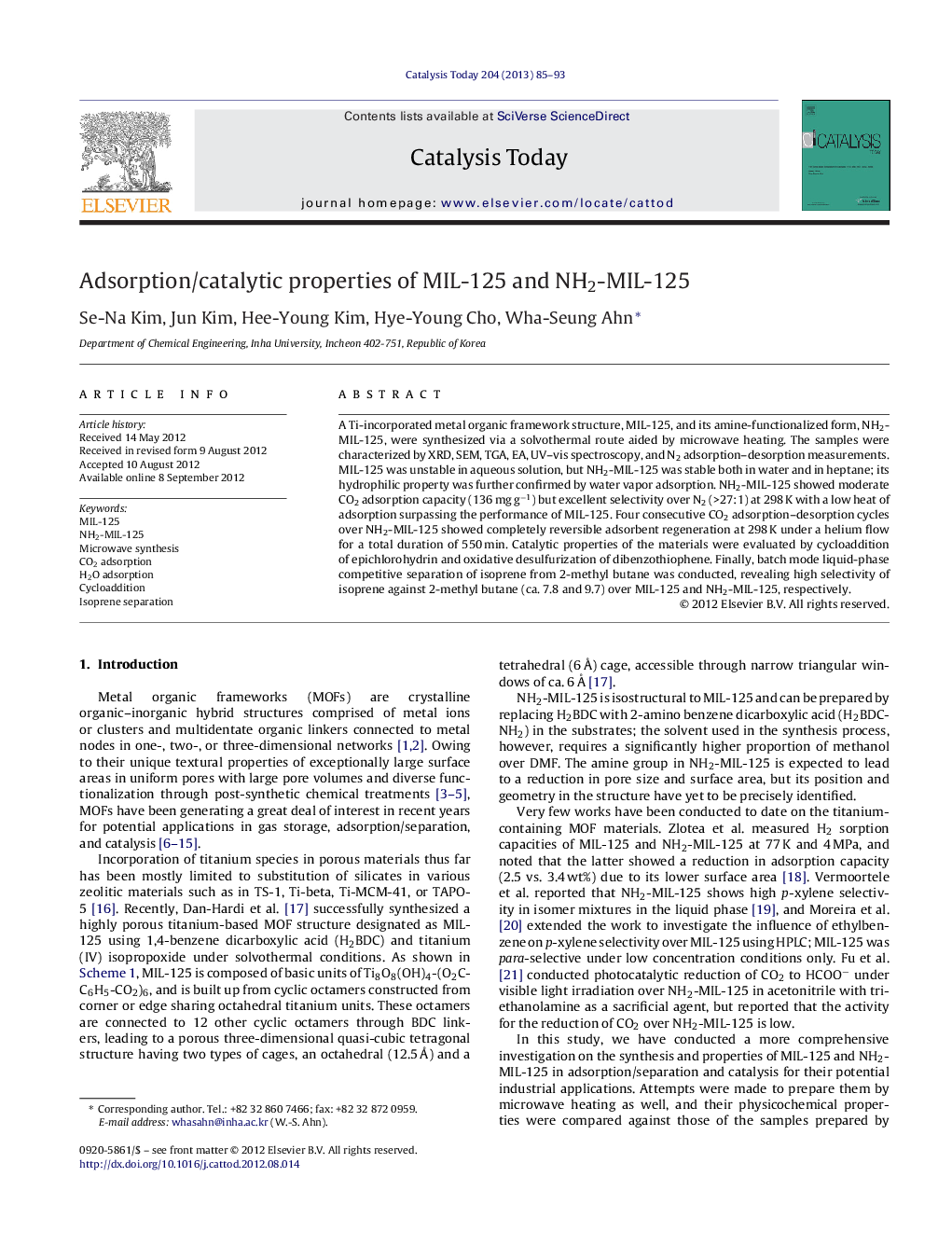| Article ID | Journal | Published Year | Pages | File Type |
|---|---|---|---|---|
| 54894 | Catalysis Today | 2013 | 9 Pages |
A Ti-incorporated metal organic framework structure, MIL-125, and its amine-functionalized form, NH2-MIL-125, were synthesized via a solvothermal route aided by microwave heating. The samples were characterized by XRD, SEM, TGA, EA, UV–vis spectroscopy, and N2 adsorption–desorption measurements. MIL-125 was unstable in aqueous solution, but NH2-MIL-125 was stable both in water and in heptane; its hydrophilic property was further confirmed by water vapor adsorption. NH2-MIL-125 showed moderate CO2 adsorption capacity (136 mg g−1) but excellent selectivity over N2 (>27:1) at 298 K with a low heat of adsorption surpassing the performance of MIL-125. Four consecutive CO2 adsorption–desorption cycles over NH2-MIL-125 showed completely reversible adsorbent regeneration at 298 K under a helium flow for a total duration of 550 min. Catalytic properties of the materials were evaluated by cycloaddition of epichlorohydrin and oxidative desulfurization of dibenzothiophene. Finally, batch mode liquid-phase competitive separation of isoprene from 2-methyl butane was conducted, revealing high selectivity of isoprene against 2-methyl butane (ca. 7.8 and 9.7) over MIL-125 and NH2-MIL-125, respectively.
Graphical abstractA Ti-incorporated metal organic framework structure (MOF) MIL-125, and its amine-functionalized form, NH2-MIL-125, were directly synthesized via a solvothermal route aided by microwave heating, and their adsorption (H2O, CO2), separation (isoprene/2-methyl butane) and catalytic properties (olefin cycloaddition, oxidative desulfurization) were investigated.Figure optionsDownload full-size imageDownload high-quality image (252 K)Download as PowerPoint slideHighlights► Titanium-incorporated materials MIL-125 and NH2-MIL-125 were synthesized. ► NH2-MIL-125 was also prepared via microwave heating. ► CO2, N2, and H2O adsorption properties were measured at different temperatures. ► Redox and acid/base catalytic properties were investigated. ► Liquid phase separation of C5 olefin/paraffin was conducted.
